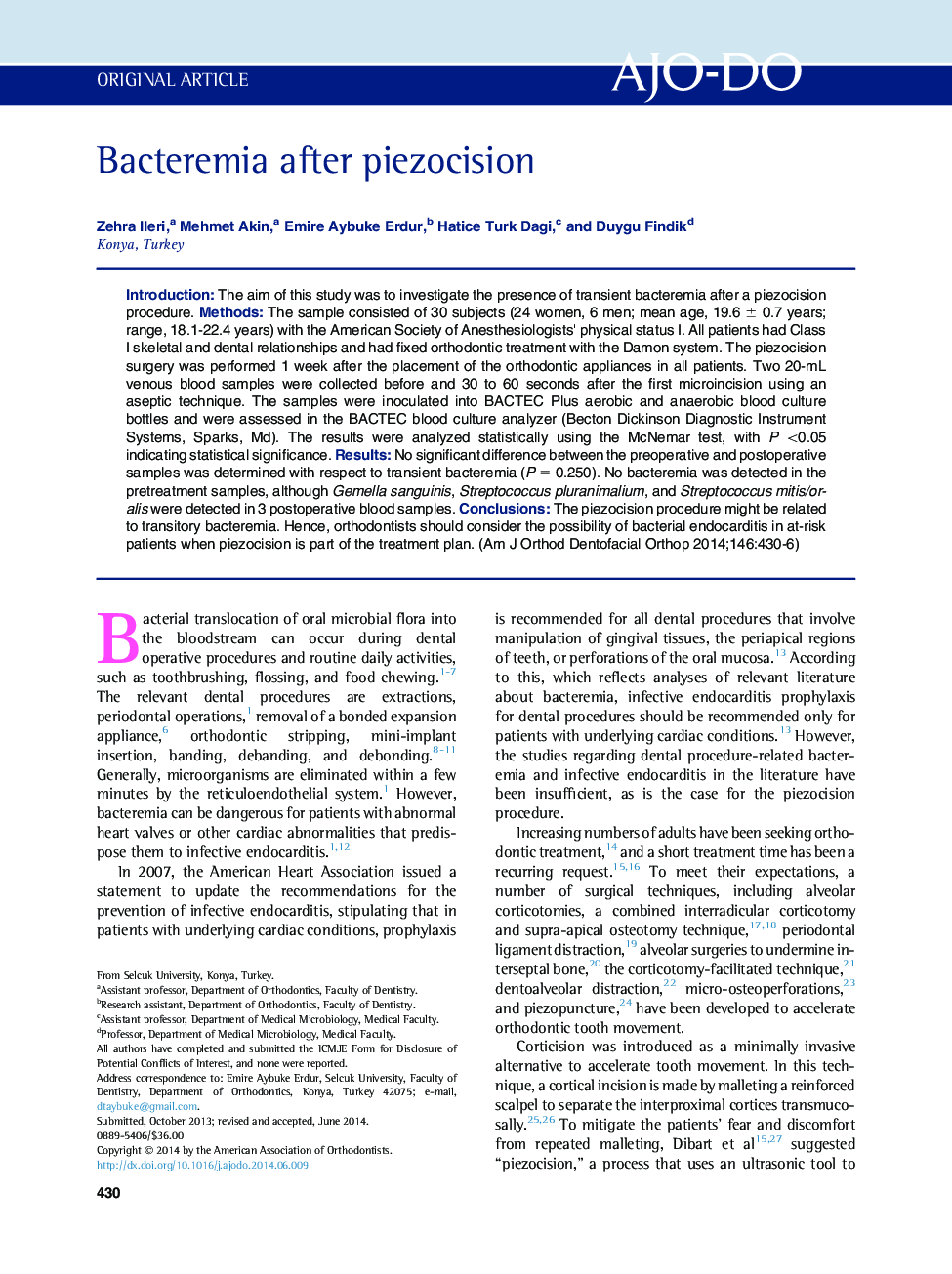| Article ID | Journal | Published Year | Pages | File Type |
|---|---|---|---|---|
| 3116304 | American Journal of Orthodontics and Dentofacial Orthopedics | 2014 | 7 Pages |
•Piezocision could be related to transitory bacteremia.•Orthodontists should consider the possibility of bacterial endocarditis in at-risk patients.
IntroductionThe aim of this study was to investigate the presence of transient bacteremia after a piezocision procedure.MethodsThe sample consisted of 30 subjects (24 women, 6 men; mean age, 19.6 ± 0.7 years; range, 18.1-22.4 years) with the American Society of Anesthesiologists' physical status I. All patients had Class I skeletal and dental relationships and had fixed orthodontic treatment with the Damon system. The piezocision surgery was performed 1 week after the placement of the orthodontic appliances in all patients. Two 20-mL venous blood samples were collected before and 30 to 60 seconds after the first microincision using an aseptic technique. The samples were inoculated into BACTEC Plus aerobic and anaerobic blood culture bottles and were assessed in the BACTEC blood culture analyzer (Becton Dickinson Diagnostic Instrument Systems, Sparks, Md). The results were analyzed statistically using the McNemar test, with P <0.05 indicating statistical significance.ResultsNo significant difference between the preoperative and postoperative samples was determined with respect to transient bacteremia (P = 0.250). No bacteremia was detected in the pretreatment samples, although Gemella sanguinis, Streptococcus pluranimalium, and Streptococcus mitis/oralis were detected in 3 postoperative blood samples.ConclusionsThe piezocision procedure might be related to transitory bacteremia. Hence, orthodontists should consider the possibility of bacterial endocarditis in at-risk patients when piezocision is part of the treatment plan.
